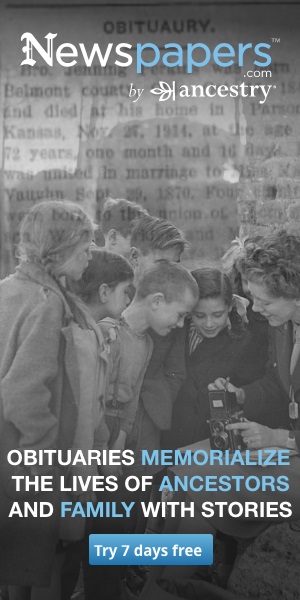U.S., Social Security Death Index, 1935-20141813 Ocmulgee Forts Helped Settlers Survive
This article is compiled by Julian Williams.
The Indian massacre of 250-300 at Fort Mims, Alabama, in August of 1813, put another fright into the settlers of the Ocmulgee River area.
They pleaded for help; ironically, that help came in the same month that Red Eagle led the merciless Upper Creeks in the slaughter at Fort Mims.
Governor Mitchell authorized General David Blackshear to erect a chain of forts on the Ocmulgee River from present-day Macon to Horse Creek on the eastern edge of Telfair County.
The illustration below gives the location of those forts in the geographic areas designated at that time (county lines have changed since then - Telfair was initially carved from Wilkinson and Pulaski's boundaries have changed several times).
The forts were to be 100 feet square except for the forts in Telfair - those three forts, Fort Adams, near Temperance (a few miles above Jacksonville), Fort Clark (at present-day site of Blockhouse Baptist Church near Jacksonville), and Fort McIntosh (at Horse Creek , below Jacksonville), were to be ninety feet square.
Each fort was manned by four detachments of one subaltern (lieutenant), a sergeant, a corporal and twelve privates. Also, two "spys" (spies) or scouts on horseback would sweep (patrol) the area across the river.
The detachments would serve for ten days before being relieved.
Each fort was to have walls constructed of upright logs to provide a barricade eight feet high.
Each fort was to also have two blockhouses, situated in corners diagonally opposed. Of course, this is where Blockhouse Baptist Church gets its present name; women and children, and men when they were not on watch or at some task, would gather in one of the fort blockhouses to have worship services.
I even remember some of the older people of the community saying, "We are going to the blockhouse," (meaning Blockhouse Church).
The drawing below is one conception of how these forts might have appeared at the time.
Thanks to Chris Trowell, historian, I can give you the names of some (1st and 2nd detachments) of the soldiers in 1813 who pulled duty at the old forts in Telfair County.
See if you spot any of your kinfolks in the list: At Fort Adams there were Lt. Wm. Cooley (Compt. (?Comptroller)), Sgt. Fletcher, Cpl. David Foreman, Wm. Griffin, Wm. Roundtree, John McCall, John Fletcher, John Manelly, Reuben Hall, Wm. Studstill (who was also listed as a "spy"), Wm. McMullen, John McCall, Wm. Stephens, Lain Posey, Farquett McCray, John Hall, Joseph Fletcher, Benj. M. Griffin, and Robt. Sulsphen.
At Fort Clark these men served: Lt. Cooley (he obviously commanded all three forts), Sgt. Ludd Mobley, Cpl. Ezekiel Ford, John M. Mullen, Hugh McCall, Jesse Fouracres, Sam Culewell, Josiah Swain, John McLeod, Horten Henley, Sgt. James Wallis, Cpl. David Foreman, Thomas Swain, Wm. McMullen, James Rouse, John Cary, John Fally, and Ames Sutten.
Fort McIntosh listed these soldiers: Lt. Cooley, Sgt. Abraham F. Powell, Cpl. John Whelas, Henry Wilson, Thomas Watts, Jesse Wiggons, Wm. Dennis, James Gill, Lewis Hatten, John Copelan, Nathan Lott, Henry Hightower, James Watts, Cpl. Wm. Dennis, Jesse Copelan, Reuben Hornesbey, Thomas Attmon, Wm. Moore, Duncan Camel, Barnett Levinston.
Note: Above listed as they were written.
Camel might have been Campbell, Levinston (Livingston), Copelan (Copeland), and so on.


